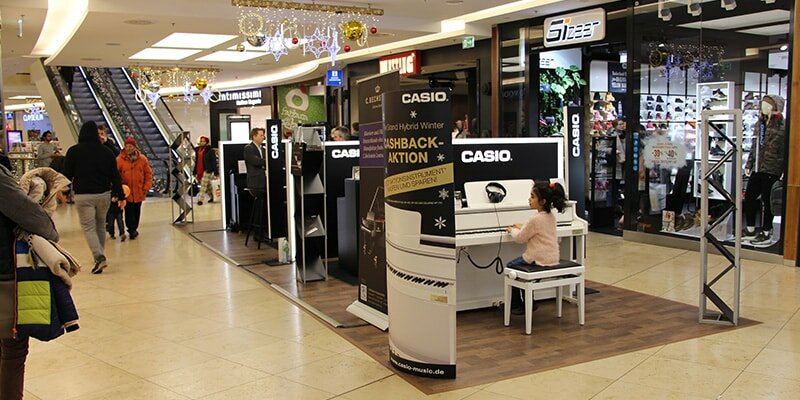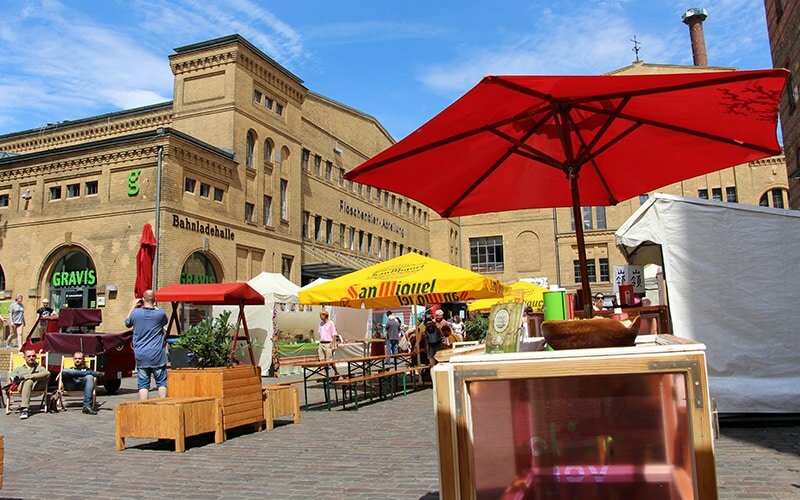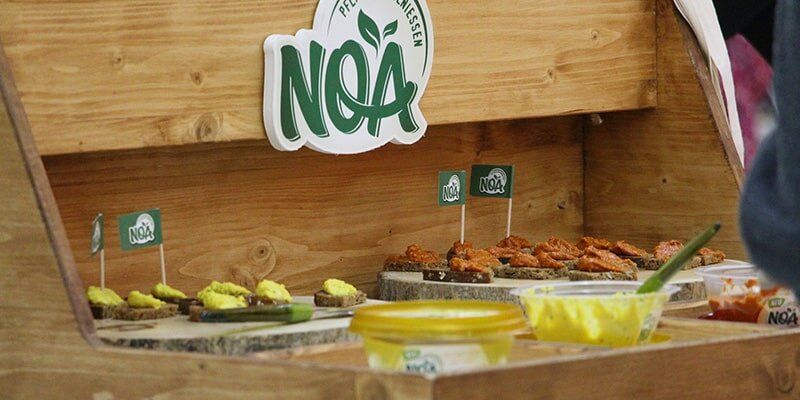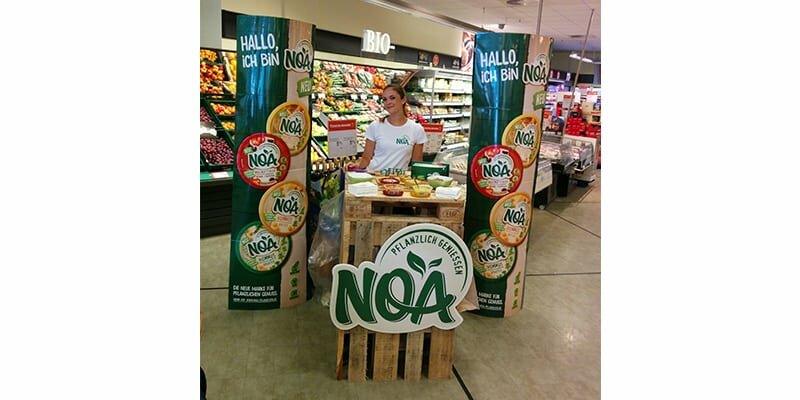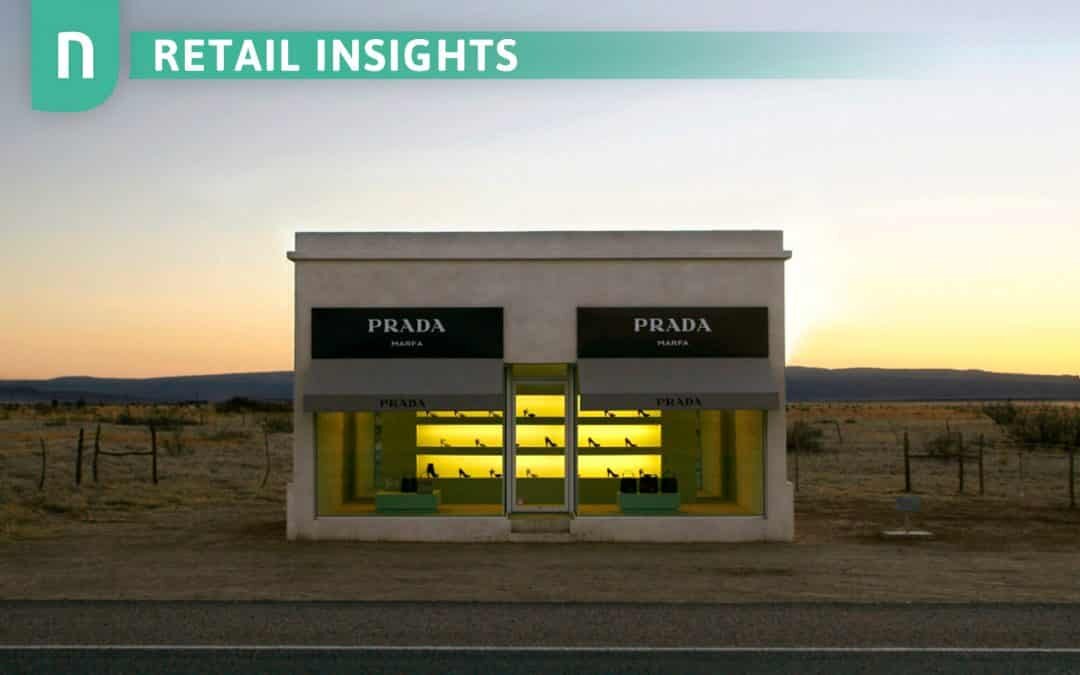Pop-up retail is more than just a trend. They are a highly effective business tool for offline as well as online retailers, regardless of business size, as shown by online retailers (Warby Parker, Glossier, Birchbox), offline retailers (Fendi, Benfit, KITH x Nike), as well as celebrities (Kylie Jenner, Kanye West). The temporary stores showcase a brand for any time frame between one to 120 days and reflect how consumers, especially Millennials, like to shop today.
The advantages of setting up a temporary retail space are multifaceted.
MiNODES teamed up with store2be to present the top reasons of going pop-up:
1. Generate additional revenue
Pop-ups are built around the concept of temporary offerings and scarcity, which has a positive effect on consumers’ spending habits – no discounts needed. Creating a “Get It While It Lasts” urgency allows businesses to sell more merchandise in shorter time. While “showrooming” has become popular among shoppers who prefer to shop online, consumers are more willing to purchase on the spot when in a “limited edition” pop-up environment, because merchandise will be gone tomorrow. Plus, they are also willing to purchase more: according to pop-up architect Melissa Gonzalez, businesses have seen their cart size double compared to online sales.
2. Learn more about your consumers
What gets measured gets managed: pop-ups are another retail channel that offers a gold mine of information on consumer behavior. Product and brand performance metrics allow for quantitative insights that complement the data derived from other retail channels and enable fact-based decision-making. The following insights can be provided by solution providers that are specializing in advanced consumer analytics, such as MiNODES:
- How many consumers visit the pop-up event and how long do they engage with the offering?
- Benchmarking: which pop-up location and format perform best in terms of number of visitors, dwell time and conversion rates?
- How often does a product get picked up? How often does a shirt get tried on? How often do those try-ons convert to sales?
- What kind of consumer segments are engaging with the merchandise?
3. Create an organic marketing buzz
The competition for consumer attention among retailers has become very strong, online as well as offline. It is no longer enough to optimize the online presence of your online shop or App, but the physical retail experience is just as important. Today’s consumers live by their daily schedules and routines and creating unexpected, memorable live experiences is an effective way to stand out from the crowd and boost brand awareness. When encountering a physical pop-up experience in an unexpected location, consumers will feel a sense of discovery, which will make them feel more deeply connected to the brand.
4. Test new products, campaigns and store concepts
The performance of a new product line, marketing campaign, or store design can be tested in a separate pop-up retail location before committing to a full roll-out. The pop-up provides a safe environment for testing consumer behavior and it delivers measurable results within a short time frame. Future demand can be predicted, based on the insights gained. Consumer feedback and suggestions can be collected before going to market on a full scale, improving the likelihood of success.
store2be:
“We have organized several live marketing events with companies who have had incredibly positive experiences with their offline presence for various reasons: Food retailers have used offline events to do market testing on a smaller scale prior to fully entering the market. We have for instance worked with vegan bread spread manufacturer NOA, and Olive Joy. They seized the opportunity of grasping a small amount of customers offline, gave out free samples of e.g. a new flavor or novel product and were able to gather the consumers’ valuable feedback straightaway and eventually boost on-site sales (“try before you buy”). Also, we have supported companies from the consumer electronics sector such as CASIO with the organization of a temporary offline presence and they have used their appearance to make customers aware of new product lines in advance of launching them and offer consumers as many information as possible on the spot. CASIO appeared in two main shopping malls in both Berlin and Munich just before Christmas and had their new line of digital pianos on display. They encouraged visitors to sit down and play on the pianos and altogether managed to create a very pleasant atmosphere and a positive brand association paired with customers’ consideration of their newly launched product.”
5. Take advantage of seasonality, holidays or sales
New seasons and holidays are the prime time for shopping and this is why they present extremely good pop-up retail opportunities. Make the most out of the seasonal shopping sprees and strategically choose holidays that fit to your product offering or brand image. According to NRF, holiday retail spending increased by 4 percent in 2016. Online sales increased by 12.6 percent over the year before.
6. Unload old inventory
Having trouble getting rid of old inventory? Converting excess inventory into cash becomes easier when offered at a different location to a different group of consumers, to which it appears new and exciting. For example, by means of hosting a pop-up sale.
7. Go to where your customers are
Location and convenience are key factors when designing physical retail experiences. Pop-up concepts offer brands the flexibility to tell their story wherever their customers spend their time and like to hang out, which might be a vacant gallery, sport stadium, street corner, or airport.
store2be:
“It is essential to get hold of a potential customer in the matching surroundings. If the chosen location and desired customer group are incompatible, it is questionable whether the event will result in any sales at all and all the effort might have been in vain. Instead, a location should be chosen very carefully and with loads of consideration. Think about your product, business image and – most importantly – your target audience. Where can your potential customers be reached most effectively? Take the case of a FMCG company that aims at reaching a young female audience. Think out of the box to create awareness for that specific group. Why not approach them at a premiere of a blockbuster movie in a cinema that aims for a similar target audience. You can be almost certain that your desired potential customers will show up, and what’s more: they are most likely in a jovial mood, because they are spending leisure time which in turn results in good chances that they are willing to spend extra money on your product. You see, giving thoughts on where you would like to appear is a crucial factor to your success. The very same FMCG company used here as an example could be able to boost sales in said cinema scenario but would probably fail to succeed with their marketing efforts while a football match is on in a famous stadium. Timing your event is another key factor and supports what has been stated above (point 5) as the time of the year and approaching holidays etc. have influence on the mood people are in and how much money they are willing to spend.”
8. Access premium retail locations
According to the Commercial Real Estate Outlook: 2017.Q1, US retail rents advanced by 4% in 2016 are still increasing, especially premium shopping locations. Is it worth the price? Before locking into a 5- or 10-year lease deal, it is well worth to invest in a pop-up shop that allows management to test the waters and calculate the ROI of the location. Affordability is especially important for new businesses with smaller funds.
9. Be different
A pop-up establishment does not need to be a traditional store. In fact, the very nature of a pop-up concept is to surprise and arouse curiosity, so it should resemble anything but a conventional retail store environment. Examples for innovative and popular pop-up formats are converted trucks, school buses, shipping containers, and kiosks.
10. Connect offline and online
Pop-up concepts are a great way to engage consumers across both offline and online channels, which is the holy grail of omnichannel retail. Consumers can be incentivized to share their brand experience across social media, which in turn makes them become a brand ambassador and influencer. Brand sentiment can be analyzed across social media chatter, in order to gain a deeper understanding of campaign success, brand image and merchandise performance.
MiNODES:
“Retargeting helps retailers to derive a long-term value from the pop-up. While retargeting has initially been implemented with great success in online retail only, we make the same remarketing capabilities accessible to physical retailers. We have seen great results across a wide range of retail channels, pop-up as well as permanent retail locations, such as flagship, mall or department store outlets.
Our portable retargeting sensors act like a web-cookie when they tag nearby consumers who are engaging with the physical retail space. The brand hosting the pop-up event is then able to reach those visitors across online channels and mobile apps with targeted advertising. The most compelling retargeting goals are converting ad viewers to website visitors or app users, as well as incentivizing the consumer to visit the local retail store of the company. This way, businesses can make sure that the new customers won during the pop-up campaign will convert to returning customers, growing stronger relationships and increasing the customer lifetime value.”
store2be:
“We have worked with numerous startups and young businesses alike that offer their products or services online. Exclusively using the online channel for sales has several advantages with saving rent for a physical store being the most obvious one. This might work excellently for big players with year-long experience, popularity and market share. Startups, however, often struggle to gain the desired attention from their customers, due to their business being new and yet unknown.
We found that a temporary offline presence has helped such businesses immensely. They were able to present their products or services to customers in person which naturally made the displayed goods a lot more tangible than merely being shown online. The costs of such a live marketing event are in most cases manageable for a startup marketing budget, especially because it is great value. Offline consumer touch points have the chance to boost sales in the long term and create an exquisite and lasting relationship with the end consumer.”
11. Grow your community
Live communication is one of the most valuable assets of physical retail. Pop-up stores are a great platform to initiate communication between brand and consumers, as well as between consumers, fostering relationships and strengthening social bonds. Community-building can be facilitated by offering wellness services, cultural stimulation, as well as food and beverages, along with the general merchandise. Offerings like coffee, cocktails, smoothies, yoga classes, film, arts, or crafts make consumers feel comfortable and keep them engaged.
Pop-ups are more than just an additional retail channel.
They are a smart way to boost engagement among existing customers and to facilitate the entrance to new markets. Not only are pop-up concepts effective for growing and differentiating your brand if you are a young business, but they also help keeping things fresh for already established brands.
We have observed passersby to be very open to almost any product displayed with the help of an offline marketing event as they do not necessarily expect marketing or sales to take place. That is an immensely valuable chance for any marketer that should be seized, not only to grow the consumer base and drive sales, but also to test and potentially adapt your product and marketing according to the feedback and insights gained.
About MiNODES
MiNODES retail analytics and retargeting solutions enable retailers to drive store traffic by quantifying consumer traffic, benchmarking shopper engagement across retail locations, and optimizing offline and online marketing campaigns. https://minodes.com/
About store2be
store2be offers promotional spaces and live marketing campaigns on an online booking platform to companies, brands and agencies and organize their offline appearance in e.g. shopping malls, universities, airports, train stations or at events. Additionally, the success of the particular live communication event becomes measurable with the help of their event analytics technology. https://www.store2be.com/
